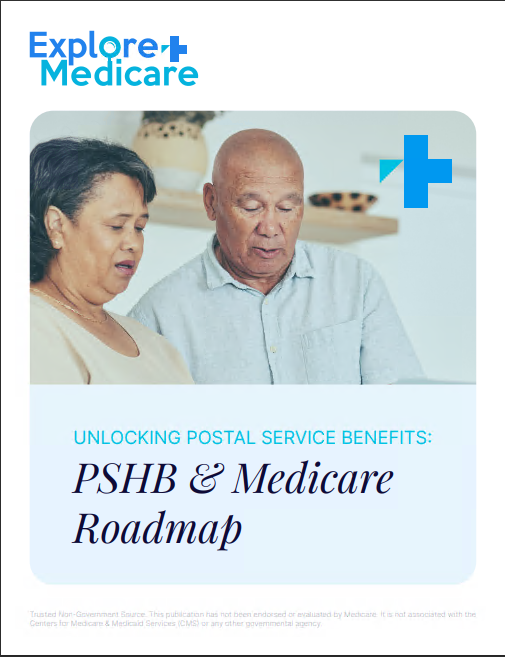Key Takeaways
-
Medicare Advantage plans, also known as Part C, offer alternative coverage to Original Medicare and typically include extra benefits, but not without potential trade-offs.
-
In 2025, changes in coverage, provider networks, and out-of-pocket limits make it even more essential to understand the plan structure before enrolling.
What Is Medicare Advantage (Part C)?
Medicare Advantage, also known as Medicare Part C, is an alternative to Original Medicare (Parts A and B). Offered by private insurance companies approved by Medicare, these plans bundle hospital, medical, and often prescription drug coverage into one plan. Many also include extra benefits like dental, vision, hearing, and wellness services.
Although they must cover everything Original Medicare covers, Medicare Advantage plans often operate through provider networks, and your ability to see certain doctors or specialists may be limited depending on the plan.
What You’re Giving Up With Original Medicare
When you enroll in a Medicare Advantage plan, you agree to receive your Medicare-covered services through the plan, not directly through the federal program. That means:
-
You usually need to use the plan’s network of providers
-
You may need referrals to see specialists
-
You can’t pair your plan with Medigap coverage
While some people find these trade-offs manageable, others may find them restrictive, especially if they have complex health conditions or frequently travel.
What You’re Gaining With Part C
There’s a reason many people choose Medicare Advantage: the added benefits and potentially lower out-of-pocket costs. Most plans include Part D prescription drug coverage, and many offer additional services not covered by Original Medicare. Common extra benefits include:
-
Routine dental cleanings and exams
-
Vision care and eyeglasses
-
Hearing aids and tests
-
Fitness memberships or wellness programs
-
Over-the-counter medication allowances
These extras can provide value, but they vary widely between plans, so you’ll need to review each plan’s Summary of Benefits carefully.
Consider the 2025 Changes in Out-of-Pocket Protections
As of 2025, the maximum out-of-pocket limit for in-network services under Medicare Advantage plans is $9,350. This amount protects you from excessive medical costs, but it’s still important to understand:
-
What services apply toward this cap
-
Whether you’ll face higher costs out of network
-
If your plan includes coverage for out-of-network providers at all
Also, certain plans have separate deductibles or caps for prescription drugs and other services. Always ask for full details to avoid surprise expenses.
Be Aware of Network Limitations
Most Medicare Advantage plans fall into one of these categories:
-
Health Maintenance Organization (HMO): Requires use of in-network providers and often needs referrals.
-
Preferred Provider Organization (PPO): Allows some out-of-network care, often at a higher cost.
-
Private Fee-for-Service (PFFS): Offers more flexibility, but acceptance by providers can vary.
-
Special Needs Plans (SNPs): Tailored to individuals with specific health conditions or income levels.
Before enrolling, confirm that your preferred doctors and hospitals are included in the plan’s network and still accepting patients. Networks may change each year, so even if you’re re-enrolling, rechecking is a good idea.
Prescription Drug Coverage Under Medicare Advantage
Most Medicare Advantage plans include Part D coverage, but there are exceptions. If your plan doesn’t include drug coverage, you usually can’t enroll in a separate Part D plan.
In 2025, the Medicare Part D program includes a $2,000 cap on out-of-pocket drug costs, which is a significant improvement. This cap applies to plans that incorporate Part D benefits, including those embedded in Medicare Advantage.
However, not every plan offers the same formulary (list of covered drugs), and cost-sharing amounts can differ. Review the plan’s formulary and pharmacy network closely to ensure your medications are covered and your preferred pharmacy is included.
Understand Prior Authorization and Plan Rules
One common feature of Medicare Advantage is prior authorization. This means you may need approval before receiving certain services or medications. Prior authorization helps the plan manage costs, but it can also delay care.
In 2025, Medicare Advantage plans continue to require prior authorization for various treatments, especially for:
-
Inpatient hospital stays
-
Expensive imaging (like MRIs or CT scans)
Be sure you understand what requires approval and how to request it. Not following the proper steps could result in denied claims.
Comparing Costs: Premiums, Copays, and Deductibles
Even though Medicare Advantage plans have to follow certain cost-sharing rules, out-of-pocket expenses can vary significantly between plans. You’ll want to consider:
-
Monthly premiums: While some plans have low premiums, they are not free.
-
Deductibles: Some plans have deductibles for medical services or prescriptions.
-
Copayments: Fixed costs for visits, hospital stays, or services.
-
Coinsurance: A percentage you pay after meeting a deductible.
Keep in mind that even though the plan might offer extra benefits, you’ll still pay for them indirectly through copays, network rules, and other plan limitations.
Travel and Emergency Care: What’s Covered?
Unlike Original Medicare, which allows care from any provider that accepts Medicare, Medicare Advantage plans limit coverage to a geographic service area.
In 2025, most plans cover emergency and urgent care across the U.S., but:
-
Routine care outside your network or area may not be covered
-
Travel abroad is usually not covered unless the plan specifically includes it
If you travel frequently or live in different states throughout the year, Original Medicare combined with a Medigap policy might be a better fit than Medicare Advantage.
Enrollment Windows and Plan Reviews
You can enroll in a Medicare Advantage plan when you first become eligible for Medicare. This is typically during your Initial Enrollment Period, which starts three months before the month you turn 65 and ends three months after.
Other important windows include:
-
Annual Enrollment Period (AEP): October 15 to December 7 each year. You can switch plans or return to Original Medicare.
-
Medicare Advantage Open Enrollment: January 1 to March 31. You can switch to a different Medicare Advantage plan or go back to Original Medicare once.
-
Special Enrollment Periods: Triggered by life events such as moving or losing coverage.
Always use these windows to reassess your needs. Plan structures and costs change every year, and 2025 is no different.
Is Medicare Advantage the Right Choice for You?
The answer depends on your health needs, budget, and lifestyle. You may appreciate the bundled benefits and simplicity of a Medicare Advantage plan—or you may prefer the flexibility and broader access of Original Medicare with a Medigap policy.
To help decide, ask yourself:
-
Are your preferred providers in the plan’s network?
-
Do you need frequent access to specialists?
-
Do you take multiple prescriptions?
-
Do you travel often?
-
Can you afford the potential out-of-pocket costs?
Taking the time to answer these questions can help ensure you choose a plan that fits your circumstances, not just the one that looks attractive on the surface.
Making Informed Decisions in 2025
Medicare Advantage can offer real value, but it isn’t the right fit for everyone. Understand the trade-offs before enrolling. Review the Summary of Benefits, check the network list, and study the drug formulary. If anything is unclear, don’t hesitate to ask questions.
Speak with a licensed agent listed on this website if you need help comparing plans or understanding how Medicare Advantage fits into your healthcare needs for 2025.









